The academic paper i am reviewing today attempts — and fails — to accurately define and describe a relationship between foreclosures and the economy.


Irvine Home Address … 12 SANTA RIDA Irvine, CA 92606
Resale Home Price …… $859,000

Brain damage, ever since the day I was born
Drugs is what they used to say I was on
They say I never knew which way I was goin
But everywhere I go they keep playin my song
Eminem — Brain Damage
Academic writing is the only endeavor that you can take common sense, mathematically measure it, statistically analyze it, pompously write about it, and still get it completely wrong. The academic article featured today attempts to take a common sense idea — foreclosures impact house prices and the economy — and try to find some relationships that may have predictive power. They failed. They failed because they didn't properly identify causation.
Correlation is not causation
Have you heard the term post hoc ergo propter hoc? It means that just because something follows an event doesn't mean the first event caused the other. The error the authors make today is rooted in the same problem.
These authors have identified foreclosures as a causal event or circumstance which leads to other economic woes. In fact, foreclosures are another symptom of the same underlying problems — excessive debt, toxic mortgages and borrower insolvency. Foreclosures do not cause indebtedness. But excessive indebtedness is the cause of all our economic problems including foreclosures.
The bubonic plague analogy
Let's say we are doctors examining the circumstances and conditions surrounding bubonic plague, also known as the black death. Doctors noticed bulbous lesions called buboes patients often displayed before becoming very ill and dying. It would be reasonable to postulate that the buboes were the cause of death. They weren't. The nasty black buboes are merely another symptom of the disease.
in the same way, foreclosures aren't the cause of anything. People taking on excessive debts under terms with onerous and sometimes escalating payments is the root cause of all the woes in the housing market. Lenders created more debt than current incomes can support under stable terms. When the system collapsed, many borrowers became financially distressed and stopped making their mortgage payments. Mortgage delinquency is at the core of our economic problems.
Mortgage delinquency can be caused by excessive debt or borrower distress. The excessive debts of the Ponzis would have taken out the housing market even if the collapse didn't spill over into other areas of the economy. However, the implosion of the Ponzis did cause widespread economic pain because the loss of consumer spending and the dramatic decline in the demand for real estate. Therefore, the excessive debt distressed an entire class of borrowers who may or may not have been as irresponsible as the Ponzis.
Mortgage delinquency may or may not cause a foreclosure. A certain amount of mortgage distress is always present in the market. Usually, when people get into financial trouble, they simply sell their house, pocket the equity, and go on with their lives. No foreclosure. However, once prices start to fall, people submerge beneath the surface of their debts, and they can no longer sell into a rising market. With resale not being an option, many more foreclosures occur.
Since mortgage delinquency is the real problem, and since foreclosures are an incidental byproduct that only occurs when market conditions are bad, foreclosures are not the direct cause of anything. Also, not all delinquent borrowers have become foreclosures as lenders are building a huge shadow inventory of delinquent mortgage squatters, and not all foreclosures make their way onto the MLS immediately as lenders often take their REO off the market hoping for better days.
Distressed resales lower prices, and foreclosures often become distressed resales. This relationship is direct. Lenders know this, so they are withholding inventory from the market to prevent prices from going any lower. Further, lower prices prompts more of the marginally distressed loan owners into default creating an indirect impact and a self-reinforcing downward spiral.
Notice that foreclosures, though a big part of the story, are not a direct causal factor for much of anything. Keep the plague analogy in mind as you sift through the academic formalities.
Foreclosures, house prices, and the real economy
Atif Mian, Amir Sufi, Francesco Trebbi
10 February 2011
Several academics, policymakers, and regulators emphasize the role of foreclosures in the Great Recession and subsequent global crisis. This column provides one of the first attempts to show this empirically. Using micro-level data from all US states, it shows that foreclosures had a significant negative effect on house prices, residential investment, durable consumption – and consequently the real economy.
How does a negative shock to the economy get amplified into a severe and long-lasting economic slump? The answer may be found in your house. An extensive body of theoretical research shows that the forced sale of durable goods – in many cases a house – can have two undesirable consequences. First, the price of these goods is driven down. Second, these negative price effects can lead to a significant decline in real economic activity (see for example Shleifer and Vishny 1992, Kiyotaki and Moore 1997, Krishnamurthy 2009, Lorenzoni 2008, and Shleifer and Vishny 2010 for a recent discussion). Indeed, many academics, policymakers, and regulators have emphasized these models in building an understanding of the recession of 2007 to 2009.
To the first point i say, “duh!” forced sale of any good means taking the highest offer no matter how low that offer is. Of course that pushes prices down.
To the second point, if an entire industry is geared toward the production of the asset crashing in price, it stands to reason that a significant economic decline will ensue.
These two points are not where i differ with their findings. It's when we dive into the details of causation that a disagreement arises.
Unprecedented foreclosures
In recent research (Mian et al. 2011), we examine this idea in the context of the recent rise in foreclosures in the US. We ask to what extent this has been responsible for the recent collapse in house prices and the fall in durable consumption and residential investment – important factors in determining major macroeconomic fluctuations (Leamer 2007).
The stylised facts suggest a correlation at the very least. The top left panel of Figure 1 shows that aggregate foreclosure filings in the US increased from 750,000 in 2006 to almost 2.5 million in 2009. While we do not have data on foreclosures before 2006, the mortgage default rate increased above 10% in 2009, which is more than twice as high as any year since 1991. By any standard, the recent US mortgage default and foreclosure crisis is of unprecedented historical magnitude.
This sharp rise in foreclosures has been accompanied by large drops in house prices, residential investment, and durable consumption. As the top right panel of Figure 1 shows, nominal house prices fell 35% from 2005 to 2009. The drop in residential investment from 2005 to 2009 shown in the bottom left was larger than any drop experienced in the post World War II era. The drop in durable consumption is also large, but more comparable to recent recessions.
Figure 1.
These authors don't mention the effect of HELOC abuse — because they probably don't realize how important or widespread it really was. People spending their homes is where the action was at. The lack of mortgage equity withdrawal is also why the economy is in the doldrums.
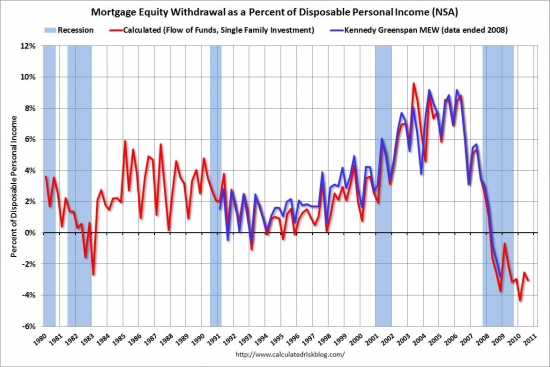
Empirical strategy
A glance at the aggregate data may lead to the conclusion that foreclosures have an obvious negative causal effect on house prices and therefore real economic activity. But isolating a causal effect of foreclosures on house prices is a significant challenge because house price declines or other negative economic shocks will lead to a rise in foreclosures. Or in other words, how do we know that foreclosures are the cause of declining house prices and economic weakness rather than an effect?
You don't because they aren't.
Our empirical strategy is designed to isolate as accurately as possible the causal effect of foreclosures on house prices and the broader economy.
No, what they are really doing is looking for correlations and hoping they find some causal link. In this instance, they picked the wrong causal factor.
We start with a micro-level data set covering the entire US from 2006 to end 2009 with information on house prices, residential investment, auto sales, mortgage delinquencies, and foreclosures. We have all of these variables at the zip code-year level, with the exception of residential investment and auto sales which are at the county-year level.
I would love to see a study on mortgage delinquency as the casual factor. Of course, with amend-extend-pretend and shadow inventory, the direct relationship which exists probably breaks down in early 2008. However, mortgage delinquency started the chain of events the caused this national catastrophe.
Our strategy to isolate the effect of foreclosures on outcomes relies on variation in foreclosures that is driven by state rules on whether a foreclosure must take place through the courts (a judicial foreclosure). In states that require a judicial foreclosure, a lender must sue a borrower in court before conducting an auction to sell the property. In states without this requirement, lenders have the right to sell the house after providing only a notice of sale to the borrower (a non-judicial foreclosure). Figure 2 maps out those states with different rules. As first highlighted in the economics literature by Pence (2006), the 21 states that require judicial foreclosure impose substantial costs and time on lenders seeking to foreclose on a house.
Figure 2.
Nice map of the judicial versus non-judicial states. It may tells us something about how long it takes a property to go through foreclosure, but it provides little else of value.
Foreclosures and house
Using this instrumental variable approach, we find that foreclosures have a substantial effect on house prices. Our state-level baseline estimate suggests that a one standard deviation increase in foreclosures in 2008 and 2009 leads house price growth to be two-thirds of a standard deviation lower over the same period.
What they have found is a correlation without direct causation.
Our estimate of the effect of foreclosures on house price growth is robust to extensive controls for demographics and income differences across states. All specifications explicitly control for the effect of mortgage delinquencies on house prices. In other words, our estimate captures the incremental price effect of foreclosures above and beyond delinquencies. In addition, the effect is robust to the use of either the Fiserv Case Shiller Weiss or Zillow.com house price indices.
I wish I were smart enough to understand how their study manages to isolate the impact of foreclosures above and beyond the delinquency that caused the foreclosure. I don't think it can be done because the causation does not exist.
We also employ a zip code-level border regression discontinuity specification that is similar to the specification that Pence (2006) uses for credit. This specification allows us to compare zip codes that are very close to each other in geographical distance and observable characteristics. Consistent with the state level correlations, there is a sharp increase in the foreclosure rate as one crosses the border from a judicial requirement state into a state with no judicial requirement. However, there is no similar jump in other observable variables as one crosses the border. Focusing only on zip codes that are very close to the border between two states that differ in judicial foreclosure requirement laws, we find similar two-stage least squares estimates of the effect of foreclosures on house prices. The similarity of the results using the zip code-level design mitigates omitted variable concerns in our other regressions.
That paragraph as loaded with some serious jargon (and bullshit). It would be interesting to see a study of judicial versus non-judicial foreclosure in a market where the substitution effect across boundaries came into play, perhaps Alexandria, Virginia versus some nearby Maryland zip codes.
Our results confirm that foreclosures have a strong negative effect on house prices that goes beyond a simple correlation.
Again, their results are wrong because they have identified the wrong causal factor.
Foreclosures, investment, and consumption
We then turn to residential investment and durable consumption. Employing a similar two stage least squares estimation strategy, we find that a one standard deviation increase in foreclosures per homeowner leads to a two-thirds of a standard deviation decrease in permits for new residential construction. Further, a one standard deviation increase in foreclosures leads to a two-thirds of a standard deviation decline in auto sales. Our estimates are robust to controls for demographics and income.
We use our microeconomic estimates to quantify the aggregate effects of foreclosure on the macroeconomy. Our estimates suggest that foreclosures were responsible for 15% to 30% of the decline in residential investment from 2007 to 2009 and 20% to 40% of the decline in auto sales over the same period.

Think about what they are saying logically. Wouldn't it make more sense that residential investment would decline when prices crashed? How are homebuilders supposed to run their businesses when the sale price of their product was in freefall? Who were they going to sell those homes to? The foreclosures didn't cause the homebuilders to pull back on new construction. A lack of sales did that.
Mortgage delinquencies and distressed sales — many of which were foreclosures — did cause prices to go down which in turn created the circumstances where builders were not incentivized to spend on residential investment. The decisions of homebuilders lowered residential investment. Foreclosures were only part of the mix that occurred in the same time period — correlation without causation.
One advantage of our study relative to the existing literature is comprehensiveness. Our analysis covers the entire US as opposed to one state or one city and we examine foreclosures all the way through the to the end of 2009. We are also the first to use state laws on judicial requirement for foreclosure to identify the effect of foreclosures on house prices – the importance of an instrument for foreclosures has been highlighted throughout the in the literature. Further, to the best of our knowledge, we are the first to examine the effect of foreclosures on real economic activity.
Foreclosures and the Great Recession
It is important to emphasise that we do not take a stand on whether foreclosures help to bring house prices, durable consumption, or residential investment closer to or further from their long-run socially efficient levels.
That is a shame. This is the main reason foreclosures are a good thing. If the market were allowed to follow its natural course, we would have seen a violent drop in prices followed by a sustained recovery. As it stands, we abbreviated the fall and now we will endure a longer and slower drop.
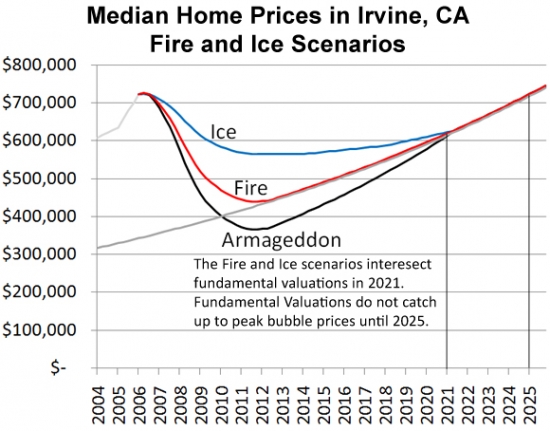
For example, in the absence of foreclosures, house prices may display downward rigidity given loss aversion (Genesove and Mayer 2001). Alternatively, house prices may be kept above their socially efficient level by government support.
I think we have seen plenty of government support.

Further, it is conceivable that the declines we document would occur in the long run even in the absence of foreclosures;
Yes, since mortgage delinquency is the real root cause, the foreclosures are not necessary to make prices go down. In fact, with the amend-extend-pretend policy at the banks, we have not seen near as many foreclosures as we should have given the high level of mortgage delinquency.
it is also conceivable that states where foreclosure is relatively easy will experience a faster housing recovery.
IMO, due to the extensive shadow inventory, the speed of judicial processing is not a big deal. Lenders don't want to process foreclosures quickly. They want to bury their heads in the sand.
But our estimates suggest that foreclosures lead to more abrupt declines in these outcomes than would be observed in the absence of foreclosures, and these declines are likely to be more painful in the midst of a severe recession. This is consistent with the amplification mechanisms emphasized in Kiyotaki and Moore (1997) and Krishnamurthy (2003). We believe that these results demonstrate a direct connection between a financial friction – forced sales induced by foreclosures – and a reduction in residential investment and durable consumption during and after the recession of 2007 to 2009.
Our estimates of the effect of foreclosures on residential investment and auto sales can partially explain both the magnitude and length of the recession of 2007 to 2009. For example, the sharp rise in foreclosures began relatively late in the recession and continues into 2010. If we combine this fact with the finding in Leamer (2007) that residential investment is among the most powerful components leading the US out of recession, it is possible to argue that foreclosures have likely contributed to the length of the recession and sluggishness of the recovery. Similar arguments apply to our findings on auto sales.
Leamer (2007) identifies durables as the part of consumer spending with the strongest negative affect on economic growth during recessions . Under the assumption that our results on auto sales extend to the entire durable goods share of the economy (23.6 % of GDP in 2008), foreclosures can explain the relatively sluggish growth in durables well into 2010. Given that the 2007 to 2009 recession and its aftermath have been closely related to depressed levels of durable consumption and residential investment, our results thus highlight an important role for foreclosures and house prices in understanding weakness in the economy.
Foreclosures one of the symptoms of our national mortgage debt disease. This debt needs to be reduced, and foreclosure is a superior form of principal reduction. Far from being the cause of our ills, foreclosures are essential to the economic recovery.
The fix is in
Whenever I see a property priced under market go pending in a single day, I am suspicious. Did the seller really get the highest and best price? Or did a shady listing agent steer the sale to a favored buyer in exchange for a kickback? I have no idea if anything nefarious happened with this property, but the transaction does look rather strange.
The owner of today's featured property paid $978,000 back on 6/1/2004. The owner used a $782,400 first mortgage, a $100,000 second mortgage, and a $95,600 down payment. On 9/30/2005 he opened a $176,100 HELOC. Since this HELOC matches the loss on the sale after commissions, the negotiations between the second mortgage holder and the borrower are at the forefront of this transaction.
Fast forward nearly seven years, and this house is now selling for a 15% loss. Not to worry, the owner hasn't make a payment in nearly two years, and the bank doesn't seem to be in a hurry to foreclose. Realistically, even if the deal is shady, the bank is probably better off than going through foreclosure and recovering even less.
Foreclosure Record
Recording Date: 03/23/2010
Document Type: Notice of Sale
Foreclosure Record
Recording Date: 06/24/2009
Document Type: Notice of Default


Irvine Home Address … 12 SANTA RIDA Irvine, CA 92606 ![]()
Resale Home Price … $859,000
Home Purchase Price … $978,000
Home Purchase Date …. 6/1/04
Net Gain (Loss) ………. $(170,540)
Percent Change ………. -17.4%
Annual Appreciation … -1.9%
Cost of Ownership
————————————————-
$859,000 ………. Asking Price
$171,800 ………. 20% Down Conventional
5.02% …………… Mortgage Interest Rate
$687,200 ………. 30-Year Mortgage
$178,270 ………. Income Requirement
$3,697 ………. Monthly Mortgage Payment
$744 ………. Property Tax
$278 ………. Special Taxes and Levies (Mello Roos)
$143 ………. Homeowners Insurance
$50 ………. Homeowners Association Fees
============================================ 
$4,913 ………. Monthly Cash Outlays
-$905 ………. Tax Savings (% of Interest and Property Tax)
-$823 ………. Equity Hidden in Payment
$336 ………. Lost Income to Down Payment (net of taxes)
$107 ………. Maintenance and Replacement Reserves
============================================
$3,629 ………. Monthly Cost of Ownership
Cash Acquisition Demands
——————————————————————————
$8,590 ………. Furnishing and Move In @1%
$8,590 ………. Closing Costs @1%
$6,872 ………… Interest Points @1% of Loan
$171,800 ………. Down Payment
============================================
$195,852 ………. Total Cash Costs
$55,600 ………… Emergency Cash Reserves
============================================
$251,452 ………. Total Savings Needed
Property Details for 12 SANTA RIDA Irvine, CA 92606
——————————————————————————
Beds: 4
Baths: 3
Sq. Ft.: 2535
$339/SF
Lot Size: 5,504 Sq. Ft.
Property Type: Residential, Single Family
Style: Two Level, Other
Year Built: 1997
Community: Westpark
County: Orange
MLS#: S646668
Source: SoCalMLS
Status: Backup Offers Accepted
On Redfin: 12 days
—————————————————————————–
Great Corner Lot location and bright Single Family Residence. First floor bedroom. 3 Car Garage with long drive way. Walking distance to schools and shopping centers. Close to I-405, I-5, John Wayne Airport, Irvine Spectrum and South Coast Plaza.

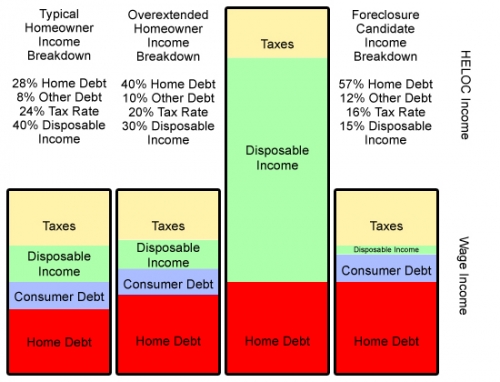


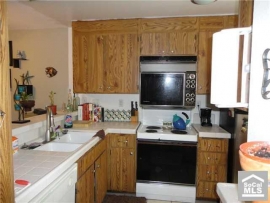
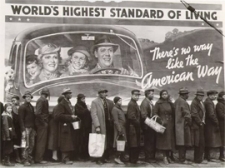







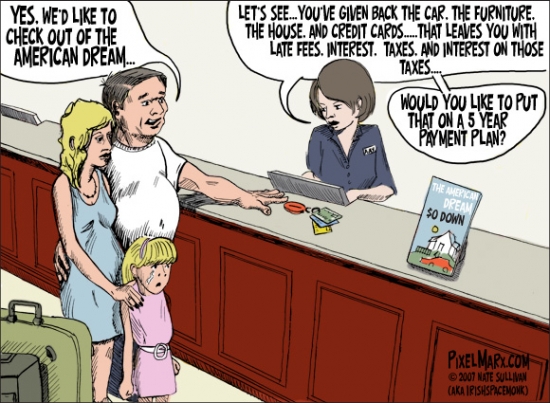

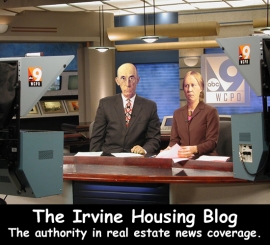











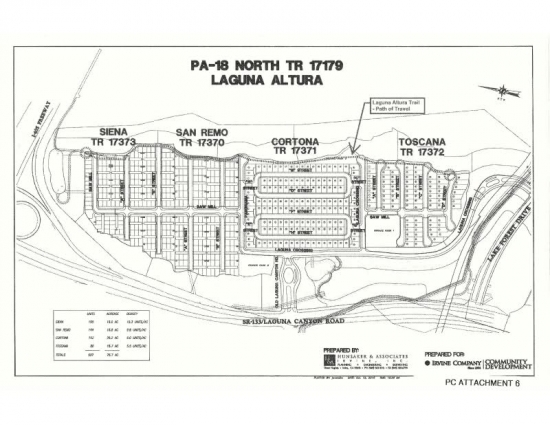
















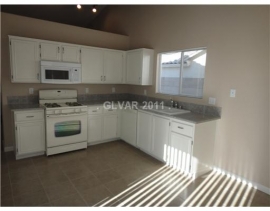

.jpg)




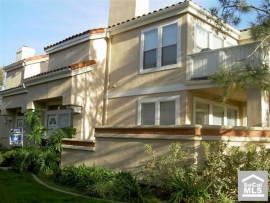





.jpg)



